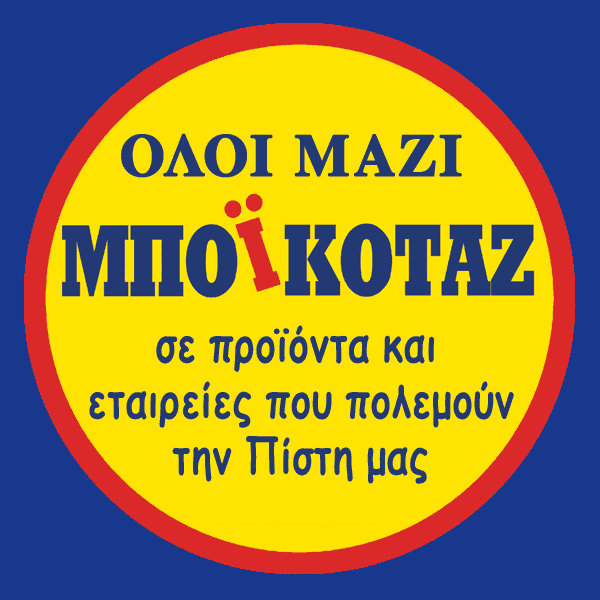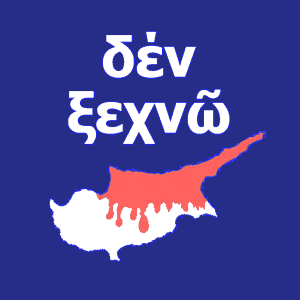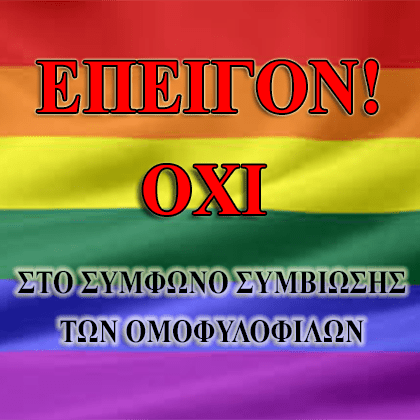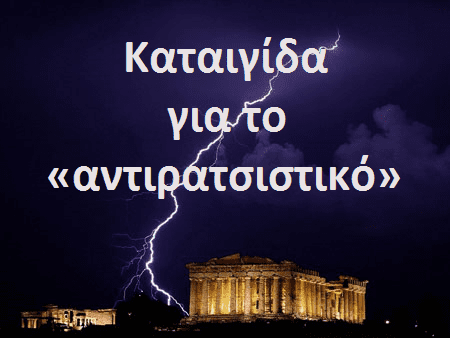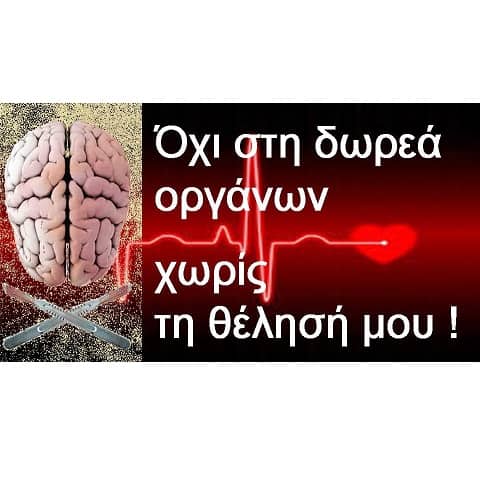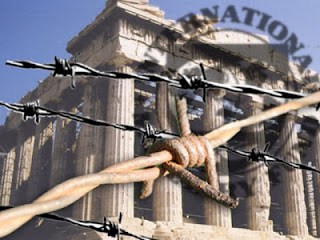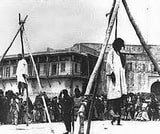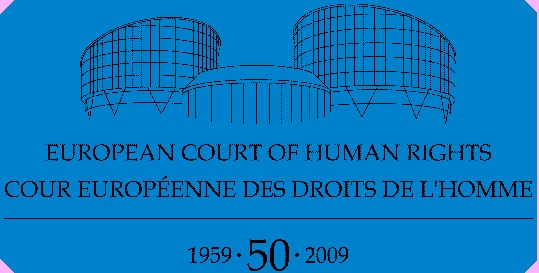
PROCEDURE
1. At the root of the matter in an application (No. 30814/06) against the Italian Republic and of which a national of that State, Ms. Soile Lautsi ( "the applicant") referred to the Court July 27, 2006 in Under Article 34 of the Convention for the Protection of Human Rights and Fundamental Freedoms ( "the Convention"). It acts on its behalf and on behalf of her two children, Sami and Dataico Albertin.
2. The applicant is represented by N. Paoletti, a lawyer in Rome. The Italian Government ( "Government") were represented by their Agent, Ms E. Spatafora and his deputy co-Agent, Mr N. Lettieri.
3. The complainant alleged that the exposure of the cross in the classrooms of public schools attended by their children was an interference incompatible with freedom of belief and religion as well as the right to education and teaching conform to his religious and philosophical convictions.
4. On 1 July 2008, the Court decided to communicate the request to the Government. Pursuant to the provisions of Article 29 § 3 of the Convention, it decided that would be considered at the same time the admissibility and merits of the case.
5. Both the applicant and the Government each filed written observations on the merits (Rule 59 § 1).
IN FACT
I. THE CIRCUMSTANCES OF THE CASE
6. The applicant resides in Abano Terme and has two children, Sami and Dataico Albertin. The latter, aged eleven and thirteen, attended in 2001-2002 public school "Istituto Statale comprensivo Vittorino da Feltre, Abano Terme.
7. The classrooms all had a crucifix, which the applicant considered contrary to the principle of secularism that she wanted to educate his children. She raised the issue during a meeting April 22, 2002 by the school and argued that, in the Court of Cassation (Case
No. 4273 of 1 March 2000), the presence of crucifixes in the rooms prepared to vote for political elections had already been found to violate the principle of secular state.
8. On May 27, 2002, the school management decided to let the crucifixes in classrooms.
9. On July 23, 2002, the applicant challenged that decision before the Administrative Court of Veneto region. Relying on Articles 3 and 19 of the Italian Constitution and Article 9 of the Convention, she alleged breach of the principle of secularism. In addition, it denounced the violation of the principle of impartiality of public administration (Article 97 of the Constitution). So she asked the court to seize the Constitutional Court the question of constitutionality.
10. On October 3, 2007, the Ministry of Education adopted Directive No. 2666 which recommended that school principals to explain the crucifix. It formed part in the proceedings, and insisted that the situation complained of was based on Article 118 of Royal Decree No. 965 of April 30, 1924 and Article 119 of Royal Decree No. 1297 of April 26, 1928 (previous provisions of the Constitution and agreements between Italy and the Holy See).
11. On January 14, 2004, the Administrative Court of Veneto estimates, given the principle of secularism (Articles 2, 3, 7, 8, 9, 19 and 20 of the Constitution) that the question of constitutionality was not manifestly ill-founded and therefore appealed to the Constitutional Court. In addition, because academic freedom and the obligation to attend school, the presence of the crucifix was placed on students, parents and teachers and promoted Christianity over other religions. The applicant made a party in proceedings before the Constitutional Court. The Government maintained that the presence of crucifixes in classrooms was an "act natural", because he was not only a religious symbol but also the "flag of the Catholic Church, which was the only church named in the Constitution (Article 7). It was therefore considered that the crucifix was a symbol of the Italian State.
12. By order of December 15, 2004 No. 389, the Constitutional Court considered itself incompetent because the contested provisions were not included in legislation but in the regulations, which had no force of law (paragraph 26 below ).
13. The proceedings before the administrative court said. By a ruling of March 17, 2005 No. 1110, the Administrative Court dismissed an appeal by the applicant. He believed that the crucifix was both a symbol of history and Italian culture, and therefore the Italian identity, and the symbol of the principles of equality, freedom and tolerance and the secular state.
14. The applicant appealed to the State Council.
15. By a decree of February 13, 2006, the Council of State rejected the appeal on the grounds that the cross had become a secular values of the Italian Constitution and represented the values of civilian life.
II. THE LAW AND PRACTICE RELEVANT DOMESTIC
16. The obligation to display the crucifix in classrooms dates back to a time prior to the unification of Italy. Indeed, under Article 140 of Royal Decree No. 4336 of September 15, 1860 the Kingdom of Piedmont-Sardinia, "each school shall [it] without fault (...) be equipped with a crucifix.
17. In 1861, year of birth of the Italian State, the Statute of the Kingdom of Piedmont-Sardinia in 1848 became the Italian Statute. He stated that "the Catholic Apostolic and Roman [was] the only state religion. The other existing religions [were] accepted in accordance with the law. "
18. The capture of Rome by the Italian army, September 20, 1870, after which Rome was annexed and proclaimed capital of the new Kingdom of Italy, caused a crisis in relations between the state and the Catholic Church. By Act No. 214 of May 13, 1871, the Italian state regulations unilaterally relations with the Church and the Pope gave a number of privileges to conduct regular religious activity.
19. At the advent of fascism, the state adopted a series of circulars to enforce the obligation to display the crucifix in classrooms.
Circular of the Ministry of Education No. 68, November 22, 1922 stated: "In recent years, in many primary schools in the UK image of Christ and the King's portrait has been removed. This constitutes a flagrant violation and not tolerable for a regulation and especially an affront to the dominant religion of the state and the unity of the nation. We intimons then all municipalities of the Kingdom to restore order in schools that are lacking in the two sacred symbols of faith and national sentiment. "
Circular of the Ministry of Public Instruction No. 2134-1867 of 26 May 1926 stated: "The symbol of our religion, sacred to the faith and for the national feeling, urges and inspires young students, who in universities and other HEIs sharpens his wit and intelligence to high loads to which it is intended. "
20. Article 118 of Royal Decree No. 965 of April 30, 1924 (Rules of secondary schools of the Kingdom) reads: "Each school must have the national flag, every classroom in the image of the crucifix and the portrait of King.
Article 119 of Royal Decree No. 1297 of April 26, 1928 (approval of the General Regulation of primary education services) in the crucifix among the "equipment and materials needed for classroom schools.
National courts have held that these provisions were still in force and applicable to this case.
21. The Lateran Pacts, signed February 11, 1929, marked the "reconciliation" of the Italian State and the Catholic Church. Catholicism was confirmed as the official religion of the Italian State. Article 1 of the Treaty read: "Italy recognizes and reaffirms the principle enshrined in Article 1 of the Albertine Statute of the Kingdom of March 4, 1848, that the Catholic, Apostolic and Roman is the only religion of 'State. "
22. In 1948 the Italian government adopted its republican constitution.
Article 7 of the latter explicitly recognizes that the State and the Catholic Church are, each in his order, independent and sovereign. The relationship between the state and the Catholic Church are regulated by the Lateran Pacts and modifications thereof accepted by both parties do not require constitutional revision procedure.
Article 8 states that religious denominations other than Catholic "have the right to organize under their own statutes, as they are not opposed to the Italian legal system." The relationship between the State and these other faiths "are set by law on the basis of agreements with their respective representatives.
23. The Catholic religion has changed their status following the ratification by Law No. 121 of March 25, 1985, the first provision of the Protocol Additional to the new Concordat with the Vatican from February 18, 1984, amending the Lateran Pacts of 1929. Under this provision, the principle proclaimed in the beginning by the Lateran Pacts, the Catholic religion as the only religion of the Italian state is considered no longer in force.
24. The Italian Constitutional Court in Case No. 508 of
November 20, 2000 summed up his case by stating the fundamental principles of equality of all citizens irrespective of religion (Article 3 of the Constitution) and equal freedom of all religions before the law (Article 8) stems that the attitude of the State must be marked by impartiality and equidistance, without attaching importance to the number of adherents of one religion or another (see Case No. 925/88, 440 / 95; 329/97) or the extent of social reactions to the violation of rights of one or the other (see Case No. 329/97). The equal protection of the conscience of every person who subscribes to a religion is independent of the chosen religion (see Case No. 440/95), which is not in contradiction with the possibility of a different regulation of the relationship between the 'State and religions within the meaning of Articles 7 and 8 of the Constitution. Such a position of impartiality and equidistance reflects the principle of secularism as the Constitutional Court alleging the standards of the Constitution and that kind of "supreme principle" (see Case No. 203/89, 259/90, 195 / 93, 329/97), which characterizes the state in the sense of pluralism. Beliefs, cultures and different traditions to live together in equality and freedom (see Case No. 440/95).
25. In its ruling No. 203 of 1989, the Constitutional Court considered the issue of non-compulsory teaching of the Catholic religion in public schools. On this occasion, she stated that the Constitution contained the principle of secularism (Articles 2, 3, 7, 8, 9, 19 and 20) and the confessional character of the state had been explicitly abandoned in 1985, under Protocol Additional to the new agreements with the Holy See.
26. The Constitutional Court asked to rule on the obligation to display the crucifix in public schools, made the order
of December 15, 2004 No. 389 (paragraph 12 above). Without ruling on the merits, it stated clearly inadmissible the issue as it was to the regulations, without force of law, which therefore fell outside its jurisdiction.
LAW
I. ON THE ALLEGED VIOLATION OF ARTICLE 2 OF PROTOCOL No. 1 CONSIDERED IN CONJUNCTION WITH ARTICLE 9 OF THE CONVENTION
27. The complainant alleges in his behalf and on behalf of her children that exposure of the cross in public schools attended by these constituted an interference incompatible with its right to provide them with education and teaching in conformity with his religious beliefs and the philosophical meaning of Article 2 of Protocol No. 1, a provision which reads as follows:
"No person shall be denied the right to education. The State, in exercise of the functions which it assumes in the field of education and teaching, respect the right of parents to ensure such education and teaching in conformity with their religious and philosophical convictions. "
Moreover, the complainant alleged that the exposure of the cross also infringed their freedom of belief and religion under Article 9 of the Convention, which states:
1. Everyone has the right to freedom of thought, conscience and religion; this right includes freedom to change religion or belief and freedom to manifest religion or belief individually or collectively, publicly or privately through worship, teaching, practice and observance.
2. Freedom to manifest one's religion or beliefs shall be subject to such limitations as are prescribed by law and are necessary in a democratic society, public safety, protection order , health or morals or the protection of rights and freedoms of others. "
28. The Government disputes this contention.
A. Admissibility
29. The Court finds that the objections raised by the applicant are not manifestly ill-founded within the meaning of Article 35 § 3 of the Convention. She also notes that they face no other ground of inadmissibility. It should therefore be declared admissible.
B. Substance
1. Arguments of the parties
a) The applicant
30. The applicant has provided the history of the relevant provisions. She observed that exposure of the crucifix is based, according to national courts on the provisions of 1924 and 1928 are considered still in force, although prior to the Italian Constitution and the 1984 agreement with the Holy See and the Additional Protocol thereto. However, the contested provisions were beyond the control of constitutionality, since the Constitutional Court could have ruled on their compatibility with fundamental principles of Italian law because of their regulatory nature.
The provisions in question are the heritage of a religious conception of the state that now faces the duty of secular and it ignores the rights protected by the Convention. There is a "religious question" in Italy, because, by requiring the display of crucifixes in classrooms, the state gives to the Catholic religion a privileged position which would lead to state interference with the right to freedom of thought, conscience and religion of the applicant and her children and the right of the applicant to educate his children according to their moral and religious convictions, as well as a form of discrimination against non-Catholics .
31. According to the applicant, the crucifix was in fact first and foremost a religious connotation. The fact that the cross may be other "key play" does not entail the loss of its main connotation is religious.
Favoring one religion by exposing a symbol gives students a sense of public schools - including the children of the applicant - that the state adheres to a particular religious belief. While in a state of law, no person should perceive the state as being closer to a religious faith than another, especially not those who are more vulnerable because of their young age.
32. For the applicant, this has implications for inter alia an undeniable pressure on minors and gives the feeling that the state is far from those who do not identify with this confession. The concept of secularism means that the state must be neutral and be equidistance vis-à-vis religions, because it should not be perceived as being closer to some people than others.
The state should guarantee all citizens freedom of conscience, starting with a public education suitable to build independence and freedom of thought of the person in respect of the rights guaranteed by the Convention.
33. As to whether a teacher would be free to expose other religious symbols in classrooms, the answer is negative, given the absence of provisions permitting.
b) The Government
34. The Government observes at the outset that the question raised by this motion out of proper legal framework to encroach on the field of philosophy. It is indeed to determine whether the presence of a symbol that has an origin and religious significance in itself is a factor likely to affect individual liberties in a manner incompatible with the Convention.
35. If the cross is certainly a religious symbol, it has other meanings. It would also have an ethical significance, understandable and meaningful regardless of adherence to religious tradition or history as it speaks of principles that can be shared outside the Christian faith (non-violence, equal dignity of all human beings, and Justice sharing rule of the individual over the group and the importance of freedom of choice, separation of politics from religion, love of neighbor ending forgiveness of enemies). Certainly, the values that underpin democratic societies today have their immediate origin in the thinking of authors nonbelievers or opposed to Christianity. However, the thought of these authors would be nourished by Christian philosophy, not least because of their upbringing and cultural milieu in which they were formed and they live. In conclusion, the democratic values of today are rooted in the more distant past, that the Gospel message. The message of the cross would be a humanist message, which can be read independently of its religious dimension, consisting of a set of principles and values that form the basis of our democracies.
The cross reference to this message, it is perfectly compatible with secularism and accessible to non-Christians and nonbelievers, who might accept it since it evokes the distant origins of these principles and values. In conclusion, the symbol of the cross can be seen as devoid of religious significance, its exposure in a public place would not in itself affect the rights and freedoms guaranteed by the Convention.
36. According to the Government, this conclusion is confirmed by analysis of the jurisprudence of the Court which requires a much more proactive interference than the mere exposure of a symbol for a finding of infringement of rights and freedoms. Thus, it is an active interference that resulted in the violation of Article 2 of Protocol No. 1 in the case Folgerø (Folgerø and Others v. Norway [GC], No. 15472/02, ECHR 2007-VIII).
In this case, it is not the freedom to join or not to a religion that is at stake, because in Italy this freedom is fully guaranteed. It is not freedom to practice religion or not to believe, the crucifix is indeed exposed in the classroom but it is not required of teachers or students to address the slightest sign of salvation, reverent or mere recognition, let alone recite prayers in class. In fact, it is their not even asked to pay any attention to the crucifix.
Finally, the freedom to educate children according to parents' convictions is not in question: teaching in Italy is totally secular and pluralistic, the curriculum does not contain any reference to a specific religion and religious instruction is optional .
37. Referring to Kjeldsen, Busk Madsen and Pedersen (December 7, 1976, Series A No. 23), where the Court found no violation, the Government argues that, whatever the evocative power, a images are not comparable to the impact of active behavior, daily and extended over time as education. In addition, it would be possible to educate their children to private school or at home by tutors.
38. National authorities have wide discretion in matters as complex and delicate, closely related to culture and history. Exposure of a religious symbol in public places would not exceed the margin of appreciation left to States.
39. This is especially true in Europe there are a variety of attitudes on the subject. For example, in Greece all civilian and military ceremonies include the presence and active participation of an Orthodox clergyman in addition, Good Friday, the national mourning was declared and all offices and shops are closed as in Alsace.
40. According to the Government, the exposure of the cross does not undermine the secular state, a principle enshrined in the Constitution and the agreements with the Holy See. She would not indicate a preference for one religion, because recall and cultural tradition of humanistic values shared by people other than Christians. In conclusion, exposure of the cross does not disregard the duty of impartiality and neutrality of the state.
41. Moreover, there is no European consensus on how to effectively interpret the concept of secularism, so that states would have a wider discretion in the matter. Specifically, if there is a European consensus on the principle of the secular state, there would not on its practical implications and its implementation. The Government asked the Court to exercise caution and restraint and to refrain therefore give a precise content of up to prohibit the mere exposure of symbols. Otherwise, it would give a predetermined material content to the principle of secularism, which would defeat the legitimate diversity of national approaches and lead to unpredictable consequences.
42. The Government does not support as necessary, appropriate or desirable to maintain the crucifix in classrooms, but the choice of keeping or not there were political and therefore meet the criteria of opportunity, not legality. In the evolution history of the law outlined by the complainant, that the Government does not dispute, he should understand that Italy, though secular, has freely decided to keep the crucifix in classrooms for various reasons, including the need to find a compromise with the party of Christian inspiration is an essential part of the population and the religious sentiment of it.
43. Whether a teacher is free to describe other religious symbols in classrooms, the provision does not prohibit.
44. In conclusion, the Government asked the Court to dismiss the complaint.
c) The third speaker
45. The Greek Helsinki Monitor (GHM on ") challenges the arguments of the respondent Government.
The cross and the crucifix more, can only be seen as religious symbols. The GHM also challenges the assertion that he must see the other thing that crosses the religious symbol and that the cross is a carrier of humanist values, he believes that such position is offensive to the Church. In addition, the Italian Government would not have even indicated a single non-Christian who would agree with this theory. Finally, other religions would see the cross in a religious symbol.
46. If we follow the Government's argument that exposure of the crucifix requires no hi, or care, there would be wondering why the crucifix is exposed. The exposure of such a symbol could be seen as the institutional veneration of it.
In this regard, the GHM notes that according to the Toledo Guiding Principles on Teaching about religions and beliefs in public schools (Council of Experts on Freedom of Religion or Belief of the Organization for Security and Cooperation in Europe (OSCE)), the presence of such a symbol in a public school can be a form of implicit teaching of religion, for example by giving the impression that this particular religion is favored over others. If the Court in Case Folgerø said that participation in religious activities can affect children, then by GHM, the exhibition of religious symbols may also have one. We must also think of situations where children or their parents may fear retaliation if they chose to protest.
3. Findings of the Court
d) General principles
47. Regarding the interpretation of Article 2 of Protocol No. 1 in the functions that the state assumes in the field of education and teaching, the Court reached in its case law principles Listed below are relevant in this case (see, in particular, Kjeldsen, Busk Madsen and Pedersen v. Denmark, Case December 7, 1976, Series A No. 23, pp. 24-28, § § 50-54, Cosans Campbell v. United Kingdom, Case February 25, 1982, Series A No. 48, pp. 16-18, § § 36-37, Valsamis v. Greece, Case December 18, 1996, Reports of Judgments and Decisions 1996 VI , pp. 2323-2324, § § 25-28, and Folgerø and Others v. Norway [GC] 15472/02, ECHR 2007-VIII, § 84).
(a) must be read two sentences of Article 2 of Protocol No. 1 to the light not only from each other, but also, in particular, Articles 8, 9 and 10 of the Convention.
(b) is the fundamental right to education that is grafted the right of parents to respect their religious and philosophical convictions and the first sentence does not distinguish any more than the second, between public education and the private education. The second sentence of Article 2 of Protocol No. 1 is to preserve the possibility of pluralism in education, essential to the preservation of the "democratic society" as conceived by the Convention. Due to the power of the modern state, especially public education that needs to achieve this goal.
(c) Respect for parents 'convictions should be possible through an education capable of providing a school environment open and inclusive rather than exclusion, regardless of students' backgrounds, religious beliefs or ethnicity. The school should not be the scene of proselytizing or preaching, it should be a meeting place of different religions and philosophical convictions, where students can learn about their thoughts and traditions.
(d) The second sentence of Article 2 of Protocol No. 1 implies that the State, in fulfilling the functions assumed by it in education and training, ensure that the information or knowledge in programs are disseminated in an objective, critical and pluralistic. It is forbidden to pursue an aim of indoctrination that might be considered as not respecting the religious and philosophical convictions of parents. Here is the limit not to exceed.
(e) Respect for parents' religious convictions and beliefs of children involves the right to believe in a religion or not believe in any religion. The freedom to believe and the freedom not to believe (negative freedom) are both protected by Article 9 of the Convention (see, in terms of section 11, Young, James and Webster v. the United Kingdom, August 13, 1981, § § 52-57, Series A No. 44).
The duty of neutrality and impartiality of the state is incompatible with any discretion on the part of it about the legitimacy of religious beliefs or ways of expressing them. In the context of education, neutrality should ensure pluralism (Folgerø, § 84).
b) Application of these principles
48. For the Court, these considerations lead to the obligation of the State to refrain from imposing even indirectly, beliefs, places where people are dependent on him or in places where they are particularly vulnerable. The schooling of children is a particularly sensitive because in this case, the binding power of the state is imposed on spirits that are still missing (depending on the level of maturity of the child) the ability to take critical distance report to the message under a preferential choice expressed by the State in religious matters.
49. Applying the above principles to this case, the Court must consider whether the respondent State by requiring the exposure of crucifixes in classrooms was ensured in exercising its functions of education and teaching that knowledge is disseminated in an objective, critical and pluralistic and respect the religious and philosophical convictions of parents, in accordance with Article 2 of Protocol No. 1.
50. To examine this question, the Court will take into account the particular nature of religious symbol and its impact on students from a young age, especially children of the applicant. Indeed, in countries where the vast majority of the population belong to a particular religion, the manifestation of the rites and symbols of this religion without restriction of place and manner, may constitute a pressure on students who do not practice that religion or those who adhere to another religion (Karaduman v. Turkey, Commission decision of May 3, 1993).
51. The Government (paragraphs 34-44 above) justifies the requirement (or made) to expose the crucifix was related to positive moral message of the Christian faith, which transcends the secular constitutional values, the role of religion in Italian history and the roots of this tradition in the country. He attributes the crucifix a neutral and secular meaning in reference to history and tradition of Italy, closely related to Christianity. The Government argued that the crucifix is a religious symbol but it may also represent other values (see Administrative Court of Veneto, No. 1110 of March 17, 2005, § 16, paragraph 13 above).
In the opinion of the Court, the symbol of the crucifix has a plurality of meanings including the religious meaning is predominant.
52. The Court considers that the presence of crucifixes in the classrooms going beyond the use of symbols in specific historical contexts. She also felt that the traditional character in the social and historical meaning of a text used by parliamentarians to take an oath does not deprive the oath of its religious nature (Buscarini and Others v. San Marino [GC] No. 24645/94, ECHR 1999 I).
53. The complainant alleges that the symbol faces his convictions and violates the right of its children do not profess the Catholic religion. His convictions have achieved a level of professionalism and consistent enough for the obligatory presence of the crucifix could be reasonably understood by her as being in conflict with them. The interest in the exhibition sees the crucifix sign that the state is on the side of the Catholic religion. This service is officially accepted into the Catholic Church, which places a crucifix, a basic message. Therefore, the apprehension of the applicant is not arbitrary.
54. The convictions of Ms Lautsi also concern the impact of exposure of the crucifix on his children (paragraph 32 above), the older age of eleven and thirteen. The Court recognizes that, as discussed, it is impossible not to notice the crucifix in classrooms. In the context of public education, it is necessarily perceived as an integral part of school and can therefore be regarded as a "powerful external symbol" (Dahlab v. Switzerland (dec.), No. 42393/98, ECHR 2001 V ).
55. The presence of the crucifix can be easily interpreted by students of all ages as a religious symbol and they feel educated in a school environment characterized by a particular religion. What may be encouraging for some religious students can be emotionally disturbing for students from other religions or those who profess no religion. This risk is particularly present among students belonging to religious minorities. The negative freedom is not limited to the absence of religious services or religious instruction. It covers the practices and symbols expressing in particular or in general, a belief, a religion or atheism. This negative right deserves special protection if the State expresses a belief and if the person is placed in a situation which can not be reached or only effort and sacrifice disproportionate.
56. The exposure of one or more religious symbols can not be justified either by the application of other parents who want religious education consistent with their beliefs, nor, as the Government argues, by the necessity of a necessary compromise with political party of Christian inspiration. Respect beliefs of parents in education must take into account compliance with the beliefs of other parents. The state is obliged to religious neutrality in public education where attendance is required irrespective of religion and must seek to instill in students critical thinking.
The Court does not see how exposure in classrooms of public schools, a symbol that it is reasonable to associate with Catholicism (the majority religion in Italy) could serve the educational pluralism is essential to preservation of a "democratic society" as conceived by the Convention. The Court notes in this connection that the jurisprudence of the Constitutional Court is in the same direction (see paragraph 24).
57. The Court considers that the exposure required for a symbol of a confession given in the exercise of the public regarding specific situations under government control, particularly in classrooms, restricts the right of parents of educate their children according to their beliefs and the right of schoolchildren to believe or not believe. The Court considers that this constitutes a violation of these rights because the restrictions are inconsistent with the duty of the State to respect the neutrality in the exercise of public service, particularly in the field of education.
58. Accordingly, there has been a violation of Article 2 of Protocol No. 1 in conjunction with Article 9 of the Convention.
II. ON THE ALLEGED VIOLATION OF ARTICLE 14 OF THE CONVENTION
59. The applicant submits that the interference was denounced in terms of section 9 of the Convention and Article 2 of Protocol No. 1 also infringes the principle of non-discrimination enshrined in Article 14 of Convention.
60. The Government rejected this argument.
61. The Court finds that this complaint is not manifestly ill-founded within the meaning of Article 35 § 3 of the Convention. She also notes that it faces no other ground of inadmissibility. It is therefore necessary to declare admissible.
62. However, given the circumstances of this case and the reasoning which led it to find a violation of Article 2 of Protocol No. 1 taken together with Article 9 of the Convention (paragraph 58
above), the Court considers that there is no need to consider the case also in terms of Article 14 taken alone or combined with the above provisions.
III. ON THE APPLICATION OF ARTICLE 41 OF THE CONVENTION
63. Under Article 41 of the Convention,
"If the Court finds a violation of the Convention or its Protocols, and if the internal law of the High Contracting Party allows only the consequences of this violation, the Court grants the aggrieved party if necessary, afford just satisfaction. "
A. Damage
64. The applicant seeks the payment of a sum of at least EUR 10 000 for moral damages.
65. The Government considers that a finding of infringement would be adequate. Alternatively, it considers that the amount claimed is excessive and unsupported and seeks dismissal or reduction in equity.
66. Since the Government has not expressed its readiness to review the provisions governing the presence of crucifixes in classrooms, the Court considers that, unlike what happened in the case Folgerø and others (Case supra, § 109), the finding of a violation does not suffice in this case. Therefore, acting in equity, it gives 5 to 000 as moral damages.
B. Costs
67. The applicant seeks 5 000 for costs and expenses incurred in the Strasbourg proceedings.
68. The Government notes that the applicant has not substantiated his claim, and suggests the rejection thereof.
69. According to the jurisprudence of the Court, an applicant can not obtain reimbursement of its costs and expenses only insofar as they have reality, their necessity and reasonableness of their rates. In this case, the applicant has not produced any evidence to support his claim. The Court therefore decided to reject it.
C. Default interest
70. The Court considers it appropriate to base the rate of interest on the interest rate on the marginal lending facility from the European Central Bank plus three percentage points.
FOR THESE REASONS, THE COURT UNANIMOUSLY
1. Declares the application admissible;
2. Tell a violation of Article 2 of Protocol No. 1 reviewed in conjunction with Article 9 of the Convention;
3. Says there is no need to examine the complaint under Article 14 taken alone or in conjunction with Article 9 of the Convention and Article 2 of Protocol No. 1;
4. Said
a) that the respondent State must pay to the applicant within three months from the day the decision becomes final according to Article 44 § 2 of the Convention, 5 000 (five thousand euros), pecuniary damage, plus any amount that may be chargeable to tax;
b) as the expiry of that period until settlement, this amount will increase to a simple interest at a rate equal to the marginal lending facility from the European Central Bank applicable during this period, increased by three percentage points;
5. Rejects the claim for just satisfaction for the remainder.
Done in French, and notified in writing by November 3, 2009, pursuant to Article 77 § § 2 and 3 of the Regulation.
Sally Dollé Françoise Tulkens
Clerk Chair


